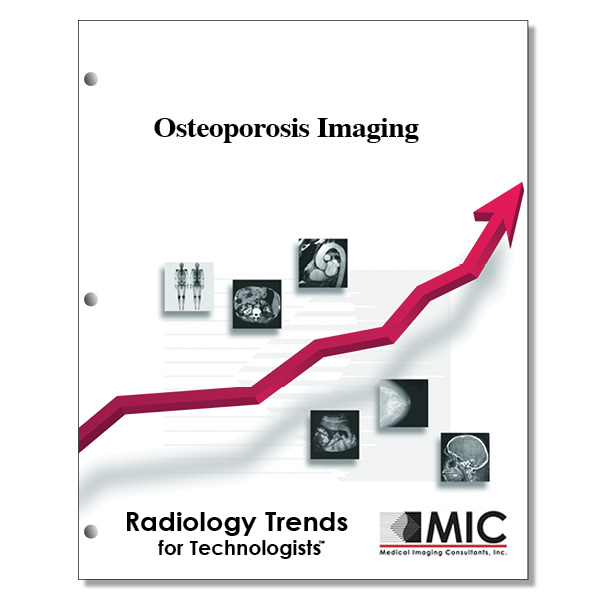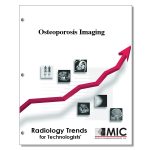

Osteoporosis Imaging
A review of state-of-the-art imaging techniques to measure bone mineral density and novel techniques to study bone quality.
Course ID: Q00382 Category: Radiology Trends for Technologists Modalities: CT, MRI, Radiography, Sonography3.5 |
Satisfaction Guarantee |
$37.00
- Targeted CE
- Outline
- Objectives
Targeted CE per ARRT’s Discipline, Category, and Subcategory classification:
[Note: Discipline-specific Targeted CE credits may be less than the total Category A credits approved for this course.]
Bone Densitometry: 2.75
Patient Care: 1.00
Patient Bone Health, Care, and Radiation Principles: 1.00
Image Production: 0.75
Equipment Operation and Quality Control: 0.75
Procedures: 1.00
DXA Scanning: 1.00
Computed Tomography: 1.50
Image Production: 0.75
Image Formation: 0.75
Procedures: 0.75
Head, Spine, and Musculoskeletal: 0.75
Registered Radiologist Assistant: 2.75
Procedures: 2.75
Musculoskeletal and Endocrine Sections: 2.75
Outline
- Introduction
- Epidemiology and Pathophysiology of Osteoporosis
- Importance of Osteoporosis Imaging
- Diagnostic Techniques to Measure BMD
- Diagnostic Techniques to Measure Bone Quality
- High-Resolution Peripheral Quantitative CT
- Multidetector CT
- MR Imaging
- MR Spectroscopy and Perfusion
- Quantitative US
- Detection of Fragility Fractures by Using Radiologic Techniques
- Conclusion
Objectives
Upon completion of this course, students will:
- know the meaning of osteoporosis and how prevalent it is in our aging population
- be familiar with the medical imaging modalities that are used to diagnose osteoporosis
- understand which of the medical imaging modalities provide qualitative, semi-quantitative or quantitative evaluation of osteoporosis
- understand which imaging modalities provide information on trabecular bone and cortical bone architecture
- understand the importance for radiologists to report coincidental fragility fracture findings
- understand the role of DXA scans in diagnosing osteoporosis
- be familiar with T- and Z-scores as outlined by the WHO
- be able to differentiate osteopenia from osteoporosis by WHO guidelines
- understand the classifications of T- and Z-scores and the patient populations they are outlined for by the ISCD
- understand how the FRAX tool is applied to T- and Z-scores
- be familiar with current research looking for biomarkers to identify osteoporosis
- be familiar with the FDA’s current stance on the review of the use of oral bisphosphonates and presence of atypical subtrochanteric femoral fractures
- understand bone composition and the various types of bone
- be familiar with the role of genetics in developing osteoporosis
- understand how osteoporosis is classified
- be familiar with lifestyle and risk factors that may put an individual at risk for osteoporosis
- identify when peak bone mass is obtained and when bone loss begins
- define what coupling means when referring to bone formation
- identify conventional radiography’s role in diagnosing osteoporosis
- be familiar with disease processes other than osteoporosis that may lead to bone loss
- be familiar with the advantages and disadvantages of DXA scans
- understand potential artifacts that may make a DXA scan inaccurate
- be familiar with the role that central QCT plays in diagnosing osteoporosis
- understand the process of conversion in QCT of Hounsfield units into milligrams hydroxyapatite per cubic centimeter (BMD)
- be familiar with ACR guidelines for QCT in calculating BMD
- be familiar with the effective radiation dose of each imaging modality used to diagnose osteoporosis
- understand the role and technology behind HR-pQ in diagnosing osteoporosis
- understand which disease processes may lead to higher BMD’s
- define quantitative bone morphometry
- understand the benefits of MDCT and its role in diagnosing osteoporosis
- explain the role of high resolution MRI in the diagnosis of osteoporotic disease
- understand the role of proton MR spectroscopy in assessing bone marrow
- describe the applications of UTE in MR imaging
- understand the benefits and disadvantages of high resolution quantitative ultrasound QUS in diagnosing osteoporosis
- understand the Genant classification of vertebral spine fractures along with the various grades
